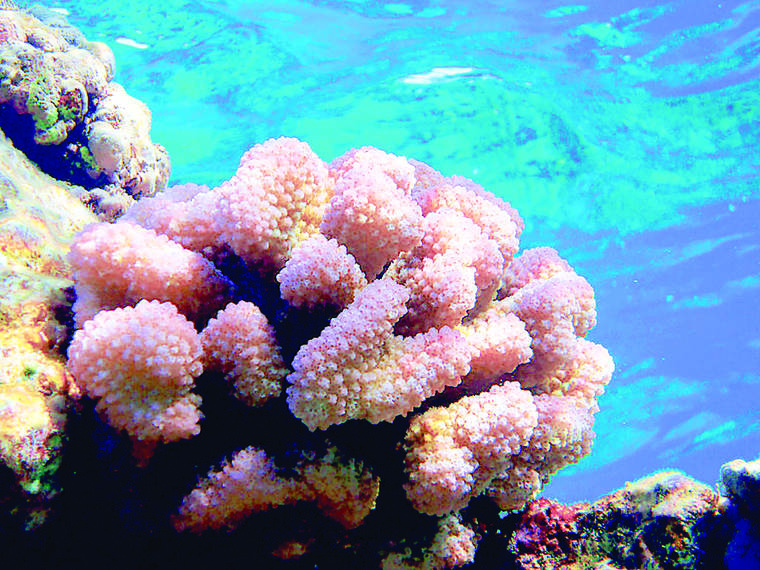Cauliflower coral not endangered
The National Marine Fisheries Service has determined reef-building cauliflower coral around Hawaii does not warrant protection under the Endangered Species Act.
“In conclusion, P.meandrina’s demographic factors are indicative of a robust and resilient species that is better suited for responding to ongoing and projected threats than most other reef-building coral species,” the National Marine Fisheries Service stated in its 12-month finding published Monday in the federal register.
The finding comes more than two years after the Center for Biological Diversity petitioned the federal agency to place Pocillopora meandrina on the list, which the center said would have minimized and/or mitigated impacts on the coral.
Cauliflower coral is a major reef-building coral that protects Hawaii’s shorelines and provides habitat for fish and crabs. New research indicates human-induced climate change and ocean warming could destroy most of the world’s coral reefs by 2,100 without reductions in fossil fuel use.
The center, a nonprofit conservation organization with more than 1.7 million members, argued protection was warranted for the bushy, shallow-water coral species because it has been devastated by ocean warming, with the coral’s coverage around Hawaii declining by 36% between 1999 and 2012.
Cauliflower corals also experienced severe bleaching during last summer’s record-breaking temperatures.
The service said in May 2019 that listing under the Endangered Species Act might be warranted, but failed to follow up, prompting the Center for Biological Diversity to sue the federal agency in October. An agreement reached earlier this year in federal court set a decision date on the petition for June 30.
The service’s report Monday acknowledges abundance has declined in some regions in recent years, but concluded the species provides capacity for recovery.
It also states the biggest threat to the coral include those caused by global climate change and those threats “stem from the inadequacy of regulatory mechanisms for greenhouse gas emissions management and the frequency, severity and magnitude of these threats are likely to worsen over the foreseeable future.”
Cindi Punihaole, director of The Kohala Center’s Kahaluu Bay Education Center, said approximately 90% of the cauliflower coral within popular Kahaluu Bay is dead.
“We see the devastation that has occurred over the years with the cauliflower coral,” said Punihaole. “It’s important that we look at the diseases that are killing our coral. It doesn’t seem to be one stressor. It may be sunscreen, nutrients or bleaching, but we see so much of it we need to look at finding out what is stressing the corals.”
Punihaole noted if restrictions were put in place, the center may not be able to study the coral.
“It’s important that we try to balance that type of decision. If you put it under endangered species, then you can’t touch it,” she said. “If you can’t touch it, how are you going to study it?”
Attempts to reach the Center for Biological Diversity via email and phone calls over a multiple-day period were not successful as of press-time Friday.
“Time is running out to save our coral reefs and the rich marine biodiversity they support. Hawaii’s coral reefs urgently need protection. Cauliflower coral, which is called ko’a in Hawaiian, will only be here for future generations if we take care of it now,” Maxx Phillips, the center’s Hawaii director, said in a March press release.


